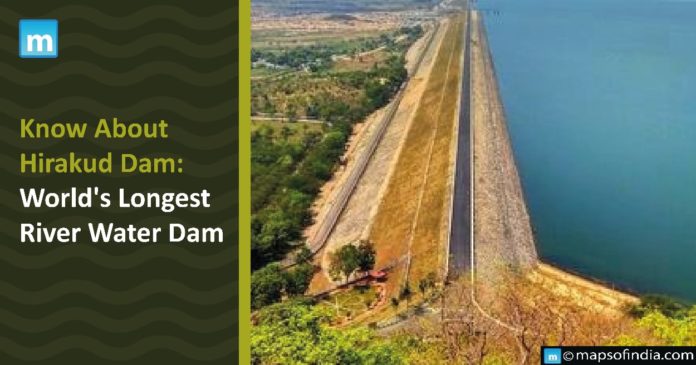Hirakud dam is the longest earthen dam in the world, built over the Mahanadi river. It is 15 km long and starts from Sambalpur, which belongs to the state of Odisha. Hirakud dam also has a 55-kilometre-long reservoir. In August 2022, it was declared a Ramsar site. It is considered one of the first major multipurpose river valley projects and is the oldest and was started after India’s independence.
History of the dam
The dam’s foundation stone was laid by Sir Hawthorne Lewis, who was the governor of Odisha at that time. The foundation stone was laid on March 15, 1946. Pandit Jawaharlal Nehru contributed to the dam by laying the first concrete batch after two years on April 12, 1948.
The government appointed the Committee of Mazumdar to keep an eye on the project. The cost of the project was Rs 92.80 crore. It was estimated to be completed by June 1955. For the dam, 1,347,000 acres were selected for irrigation, and for electricity power, 48,000 kW were generated. The foundation stone for the dam was laid in 1946, but the dam was completed in 1953 and was formally inaugurated by the then Prime Minister, Jawaharlal Nehru.
Then Prime Minister Jawaharlal Nehru inaugurated the dam on January 13, 1957. The final cost of making the longest dam was Rs 1,000.2 million. The power with agricultural irrigation was generated in 1956, but with full potential, the power and agricultural irrigation started in 1966.
About the dam
- The total length of the dam is 25.79 km.
- The length of the main dam is 4.8 km.
- There is an artificial lake built beside the dam that is 743 km2.
- The area used for irrigation is 2,355 square km.
- A large amount of land was lost during the construction. A total of 596 km2 was lost in the construction of the dam.
- The total cost of making the dam was Rs 1,000.2 million.
- The height of the dam is 60.96 m.
- The dam is built over the Mahanadi river.
- The total length of the dam is 4.8 km.
- It is a composite type of dam and reservoir.
Conflict of the dam’s water
It was decided that a major flow would be directed to the industries. A water conflict arose when they learned that water would be directed toward industries. About 30,000 farmers gathered against the decision. The farmers gathered and made a human chain and protested against the decision. The farmers were against water allocation to the industries due to the village’s low water level for the canal system.
Challenges to the people
The main objective of establishing the Hirakud dam was to control the flood affecting a significant part of Odisha. Still, the dam’s construction also affected Odisha’s people and residents. It is estimated that a total of 1,50,000 people were affected, and approximately 20,000 families were displaced from their places. It was decided that compensation would be paid instead of their homes. A total amount of 120 million was fixed, but later, it was reduced to 95 million, and in reality, only 33.2 million was paid to the people who were displaced from their own homes.





